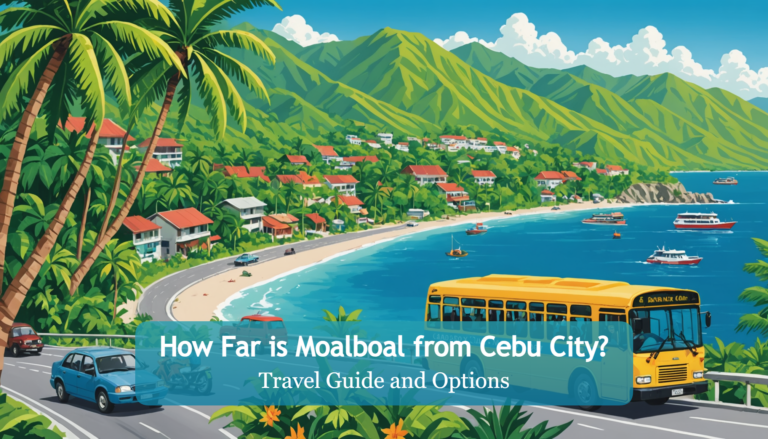Kahimsog Sa Cebuano: Exploring Cebuano Well-being
Just like a tapestry woven with intricate threads, the concept of ‘Kahimsog sa Cebuano’ encapsulates a richness that is both fascinating and profound.
As you explore the depths of the Cebuano language, you will uncover not just words but a whole cultural universe waiting to be discovered.
The linguistic nuances, traditional practices, and modern influences all interplay to create a vibrant tapestry of Cebuano identity.
Each layer peeled back reveals a new facet of this captivating world, leaving you yearning to uncover more.
Key Takeaways
- Cebuano culture thrives on diverse linguistic influences, showcasing a rich tapestry of heritage.
- Traditional festivals and rituals uphold cultural pride and historical significance in Cebuano communities.
- Ancestral beliefs and practices contribute to communal unity and harmony with nature among Cebuanos.
- Cebuano cuisine blends Spanish, Chinese, and American flavors, reflecting the region’s unique culinary identity.
Cebuano Language and Its Origins
The origins of the Cebuano language can be traced back to its Austronesian roots, intertwining with influences from Malay, Spanish, and American languages to form a linguistically diverse and culturally rich tapestry in the Philippines.
The linguistic evolution of Cebuano showcases a fascinating journey of origins exploration, where its structure and vocabulary have been shaped by centuries of interaction with various cultures. Through this intricate process, Cebuano has absorbed elements from different languages, adapting and integrating them into its unique syntax and phonology.
The exploration of Cebuano’s origins reveals a dynamic history of cultural exchange and adaptation, reflecting the resilience and openness of the Filipino people. The language’s ability to evolve and incorporate diverse influences highlights its adaptive nature, making it a vibrant and expressive medium for communication.
Understanding the roots of Cebuano provides a deeper insight into the complex tapestry of Filipino heritage, where linguistic diversity is celebrated as a testament to the country’s rich history and cultural fusion.
Traditional Cebuano Festivals and Celebrations

Exploring the vibrant tapestry of Cebuano culture, one cannot overlook the grandeur and significance of traditional festivals and celebrations that encapsulate the essence of local traditions and heritage.
These events, such as Sinulog and Kadaugan sa Mactan, hold deep historical significance by commemorating past events and celebrating cultural heritage. Colorful parades, lively dances, and traditional music are central to these festivals, honoring local beliefs and customs. Participants don elaborate costumes, engage in rituals, and pay homage to patron saints and historical figures, creating a sense of community unity and cultural pride.
To delve deeper into the festive traditions of Cebuano culture, let’s take a closer look at how these celebrations promote community unity and preserve cultural heritage:
| Historical Significance | Festive Traditions |
|---|---|
| Events commemorate past historical events | Colorful parades and lively dances |
| Celebrate cultural heritage | Traditional music performances |
| Pay homage to patron saints and historical figures | Elaborate costumes and rituals |
| Promote community unity and cultural pride | Sharing local delicacies and traditional dishes |
Through these traditions, traditional Cebuano festivals not only bring joy and merriment but also serve as pillars in upholding the rich cultural tapestry of the region.
Cultural Practices and Beliefs of Cebuanos

Indispensable to understanding Cebuano culture are the deeply ingrained beliefs and practices that shape the community’s values and interactions. Cebuanos hold ancestral traditions in high regard, believing that honoring their elders and ancestors is essential for maintaining safety and prosperity within the community.
Community rituals are a vital part of Cebuano culture, with traditional ceremonies playing a significant role in promoting a sense of security and protection. The concept of ‘bayanihan’ underscores the importance of communal unity, fostering a shared responsibility towards ensuring safety and well-being for all.
Additionally, Cebuanos emphasize harmony with nature and the environment, viewing it as a way to maintain balance and security in their daily lives. By respecting their cultural practices and beliefs, Cebuanos create a strong foundation for promoting safety and community cohesion, reflecting their deep-rooted values and traditions.
Cebuano Cuisine: A Flavorful Journey

Honoring their deep-rooted ancestral traditions, Cebuanos embark on a flavorful journey through their renowned cuisine, a fusion of Spanish, Chinese, and American influences.
Cebuano culinary traditions are a vibrant tapestry woven with diverse flavors and techniques. Local ingredients, like fresh seafood and Cebu’s famous mangoes, play a crucial role in defining the unique taste of Cebuano dishes.
Lechon, the iconic roasted pig dish, takes center stage during festivals and celebrations, showcasing the mastery of Cebuano cooking. Seafood delights, such as kinilaw and tinola, highlight the abundance of the sea in Cebu’s gastronomy.
Rice, a staple in Cebuano meals, is often accompanied by savory dishes like humba and puso, offering a wholesome and satisfying dining experience. The incorporation of these local ingredients not only adds depth to the flavors but also reflects the rich agricultural heritage of the region.
Immerse yourself in the flavors of Cebuano cuisine, where every dish tells a story of tradition and innovation.
How Does Cebuano Well-being Influence the Cebu Itinerary for 4 Days?
When planning a 4-day itinerary in Cebu, taking into account the well-being of the Cebuano people is crucial. Exploring Cebu island treasures is a way to support the local economy and culture, ensuring that tourism has a positive impact on the community’s overall well-being.
How does visiting the Sto Nino Church in Cebu contribute to the well-being of the Cebuano people?
Visiting the iconic shrine of faith, Sto Nino Church in Cebu, brings a sense of peace and spiritual nourishment to the Cebuano people. The church’s rich history and the religious significance of the image of the Sto Nino provide a source of comfort and strength, contributing to the overall well-being of the community.
How Does Exploring Rural Charms in Carmen, Cebu Contribute to Overall Well-being in Cebuano Culture?
Exploring the rural charms in Carmen, Cebu can greatly contribute to the overall well-being in Cebuano culture. With the help of a carmen cebu map navigation, locals and tourists can easily immerse themselves in the natural beauty and traditional way of life, promoting a sense of connection and belonging.
Modern Influences on Cebuano Culture

With the onset of globalization, technology, and urbanization, Cebuano culture is undergoing a transformation influenced by modern trends and practices. These changes are shaping the way Cebuanos perceive and engage with their cultural heritage. Here are three key ways modern influences are impacting Cebuano culture:
- Globalization Impact, Cultural Fusion: The interconnectedness of the world through trade, travel, and communication has led to a blending of traditional Cebuano practices with global influences. This fusion of cultures is evident in various aspects of daily life, from language and cuisine to fashion and entertainment.
- Technology Evolution, Societal Changes: The rapid advancements in technology have revolutionized how Cebuanos interact with one another and the world. Social media platforms, online learning tools, and digital communication have opened up new avenues for cultural exchange and collaboration, leading to shifts in societal norms and behaviors.
- Western Media Influence: The influx of Western media, including movies, music, and social media, has introduced Cebuanos to new perspectives, trends, and lifestyles. This exposure has sparked a reevaluation of traditional values and customs, as Cebuanos navigate the complexities of balancing modernity with heritage.
Conclusion
As you reflect on the richness and vibrancy of ‘Kahimsog sa Cebuano,’ you begin to appreciate the intricate linguistic features and deep cultural roots embedded in the Cebuano language. Moreover, the Cebuano language reflects the deep connection of the people to their cultural heritage and traditions, as well as their close relationship with Cebu’s natural wonders. From the crystal clear waters and pristine beaches to the lush mountains and diverse flora and fauna, Cebu’s natural wonders have played a significant role in shaping the language and cultural identity of the Cebuano people. It’s truly fascinating to see how the linguistic nuances and cultural expressions in ‘Kahimsog sa Cebuano’ are intricately intertwined with the beauty and diversity of Cebu’s natural environment.
Through exploring traditional festivals, cultural practices, cuisine, and modern influences, you gain a deeper understanding of the essence and soul of the Cebuano culture. Embracing the beauty and complexity of Cebuano allows you to truly immerse yourself in a linguistic and cultural journey unlike any other.
Learn more about Cebu’s language and culture by staying at Southpole Central Hotel, conveniently situated in the heart of Cebu City. Immerse yourself in the local experience and discover the rich heritage of the Queen City of the South during your stay with us.
Frequently Asked Questions
What Is the Meaning of Kaluwasan?
When exploring kaluwasan in Cebuano, you understand the concept of safety deeply. It embodies protection, peace, and well-being. Cultural significance lies in its promotion of trust and resolution of conflicts peacefully, fostering comfort and reassurance.






